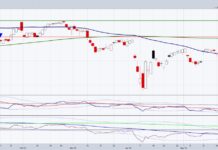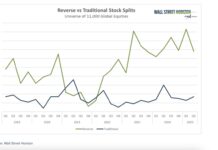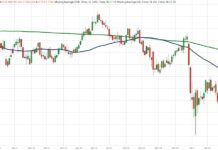Tadas Viskanta of Abnormal Returns was out yesterday with an excellent compilation of quotes on financial bubbles that along with its linked sources is the best succinct and balanced primer posted on the topic in quite some time.
As much as the bubble appellation has been tossed around over the past year (an S&P 500 pressing 30% annual return will do that), it’s ironic the ensuing debate hasn’t gotten much past polemic to ask whether this propensity – if broadly misguided – to use the term isn’t alluding to a concern that’s present and credible. I think it is, and that the prominence of the bubble meme – pro and contra – is an inadvertent red herring begging observers to read between the lines.
Anyone calling the market bubble debate a distraction probably doesn’t think US stocks (the de facto market of concern) are in one; and I remain skeptical they are. Evocative of most of the gentlemen Tadas cites, in brief I think:
- Characteristics of a bubble can be observed prior to the impending pop (Shiller, et al); but that,
- These characteristics are varied, contextual and only probable (rather than certain) in the moment; and most importantly,
- Following Phil Pearlman’s point, we are acculturated by our crisis-engendered negativity bias to weight our present set of market variables against the still-heavy shadows of 2000 and 2008 – always anxiously comparing, and often looking for and finding points of commonality. With those outlier events as a baseline that is nearly impossible to put aside or extricate ourselves from, confirmation bias constantly kicks in to sort, sift and filter for the miasmic mix of data and developments that will signal the next crisis.
Unless your stock in-trade/brand shtick is to search for market bubbles (not to be confused with the worthy pursuit of researching them), as Greg Harmon notes, you’re far better off choosing to “just continue to follow the existing trends and not worry about bubbles”. An approach that places the burden on the market to prove itself rather than inductively riveting postulates together into an anticipatory proof has proven far more profitable in good times and only negligibly worse in bad.
One value in the market bubble meme is to bring the idea out into the light of day where it can be openly “put to the question”. That done, we run the risk dispatching the idea too quickly. Here are a few (diverse) reasons why:
Bubble Commoditization
First, asset/sentiment/valuation bubbles can’t be created – or talk of them discarded – without engaging in demagoguery. The table is set for this by what Tadas calls (paraphrasing Pearlman) “our emotional proximity to recent bubbles”. “Thought leaders” in mainstream financial media and at the periphery of social finance alike know this well and have spent 5 years exploiting our sensitivity to it for nothing other than ratings, views, clicks and impressions.
As a result, financial bubbles are a powerful (and powerfully monetized) narrative theme that, ironically enough, has reached its apogee as a meme just as stocks almost seamlessly strolled through their best year of the last 15. Bubble apologists greatly benefit (props to the one guy out there doing it as an altruistic public service, whoever you are); but then, their more “rational” antagonists do also. It’s important to call out this theme out: the bubble “zeitgeist” – or as Barry Ritholtz calls it, the bubble of bubbles (not to mention the bubble of punditry ridiculing the bubble of bubbles) isn’t a pure function of higher asset prices or previous crises but has been pressed into the service of and perpetuated by by those who materially benefit from its commoditization.
Bubbles: Agents of Creative Destruction
Secondly, what if the outcome of these confirmation bias-rendered bubble variables isn’t the end of an era; but only a noteworthy setback? The “technological revolution” Liz Ann Sonders quixotically offered up in her New Year’s Eve 1999 Internet panegyric quickly looked DOA; but 14 years later the Dot-Com bust seems less like an end and more like a brief – albeit violent – stutter in a long beginning that is now begetting a pervasive Internet of Things: more ambitious but less naive than 1999. Looked at like this (fully acknowledging this does nothing for those major bets laid in 1999 that went on to fail) bubbles can be societal agents of creative destruction. One of the important intersections of academic financial research and technological futurism lies in maximizing speculative capital allocation while minimizing the (inevitable) drawdowns that mark the culmination of these cycles of innovation.
Calling Bubbles Out: Is There Any Signal Amidst the Noise?
Lastly – and much more in the moment – the faux catastrophism of the bubble meme so readily trotted out for refutation by some of its critics generates so much noise that any genuine signal is easily crowded out.
This is the red herring I mentioned earlier. A bubble and it’s popping are climactic: Empire-ending, proton-torpedoes-down-the-exhaust-port-of-the-Death-Star climactic. It is quite simple – right up until the (always potential) bubble’s denouement – to either suggest one is building (these people were right, but early); or alternatively ridicule the idea that one is building (these people are right all along, and merely wrong toward the very end).
But behind this clamorous and crude narrative dichotomy of “Bubble/No Bubble” there’s a principled market skepticism that merits recognition. Those actively approaching the markets every day know how far the S&P 500 has run. That the Fed has $4 Trillion on its balance sheet. That 2014 appears to mark the end of QE/LSAP. They know the FOMC’s December meeting minutes mention that during a “discussion of potential risks, several participants commented on the rise in forward price-to-earnings ratios for some small-cap stocks, the increased level of equity repurchases, or the rise in margin credit”. They know about CAPE (and the arguments of its detractors), SKEW, specific breadth divergences, VIX consistently pushing below 13, record NYSE margin debt utilization, and so on ad infinitum.
Is the cumulative testament of all of this a bubble in the making? Bare probability says “no”. But does that mean there isn’t major risk overhang; or that the unique biases and inefficiences created in 2012 and 2013 by the combination of stellar returns and crushed volatility won’t demand a reckoning? No and no again.
It Will Never Again Be 1999
Once and for all, the US equity markets will never again “be like 1999”. And they will never again “be just like 2007”. To say today is not a bubble because the variables present in either of those occurrences aren’t present now is intellectually disingenuous at best and hardly the much-needed humility that Morgan Housel counsels. Likewise to saying with certitude that today’s conditions are a bubble due to some other different set of variables.
Away from this doctrinaire preoccupation with a market (and even societal) cataclysm, there is the abiding, inconvenient truth that markets don’t require an acute, “new paradigm”-style melt-up as the precursor to a top. At the same time, markets don’t need a solar flare-style bubble pop brightly loosing the full fury of its enveloping incendiary force to mark a top. Cyclical highs in primary trends aren’t always set up with a storied mania, and don’t require the spectacular implosion of our economy to unfold; to suppose so is the work of those negativity and confirmation biases enabled by 2000 and 2008.
Today, we know the “madness of crowds” is an unavoidable socionomic function, but tulip bulbs and ruined men jumping from windows are now things of legend. 2000 and 2008 are the events that function as the rule by which all other market conditions as measured; but not all adverse market scenarios conform to their general example. Chances are the next major top in stocks will not. To continue framing all signs of “froth”, excess or even localized, non-systemically significant bubbles in specific industries as sure signs of an all-inclusive, all-consuming bubble is to miss the concrete (if moderate, by comparison risks and opportunities that these conditions do signal.
In other words, bearishly seek out signs of or taking bullish encouragement from the absence of conditions adhering to the standard bubble archetype inhabiting the market mythos could prove a tragic distraction when the next major correction or bear market shows up with other characteristics. That’s a correction that an active investor or trader can effectively navigate around, hedge through, or even short. Concentration on the narrative bubble dichotomy – both pro and con – does nothing to prepare for the risk and portfolio management that will be necessary to effectively weather that adverse season when it comes.
Twitter: @andrewunknown and @seeitmarket
Author holds no exposure to instruments mentioned at the time of publication. Commentary provided is for educational purposes only and in no way constitutes trading or investment advice.
Brain/$ image courtesy dnabehavior.com. House of Cards image courtesy artmarketblog.com. Bubble archetype image courtesy silver-liberties.com Any opinions expressed herein are solely those of the author, and do not in any way represent the views or opinions of any other person or entity.








